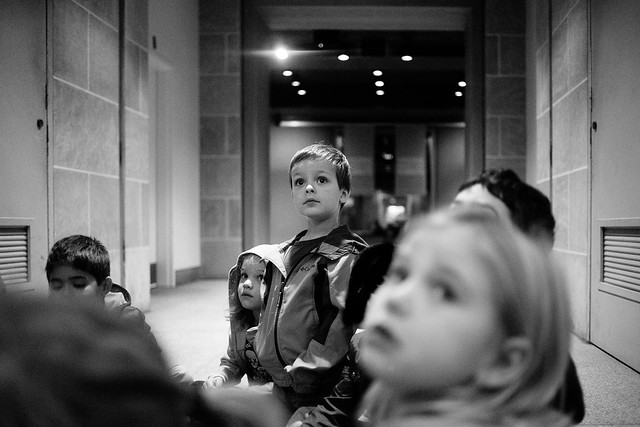
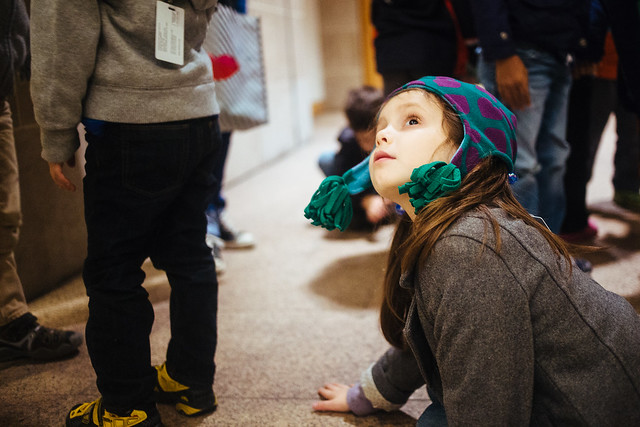

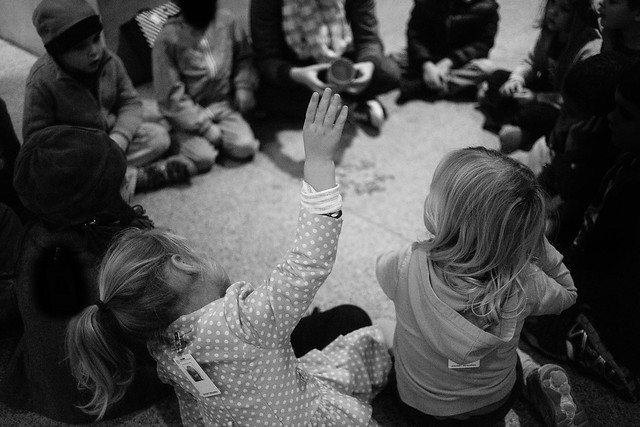
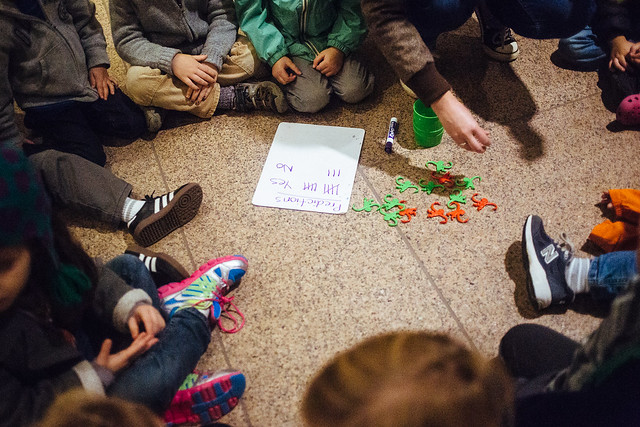
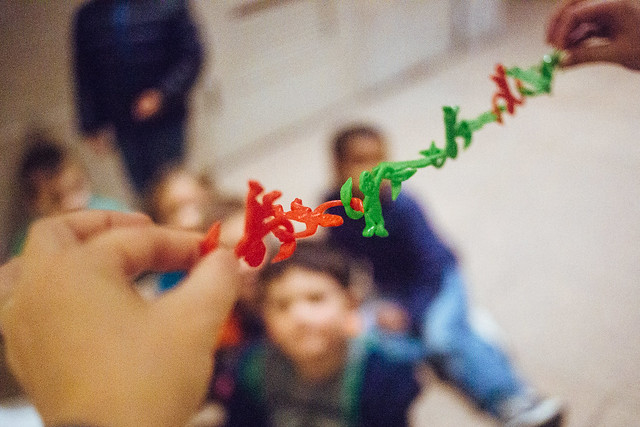
As any long-term reader of this blog probably knows, I'm a huge fan of bringing kids to museums. Even little kids. So I was pretty excited to learn that Smithsonian Early Enrichment Center ("SEEC") is now offering weekend and weekday classes for children aged 6 months through 6 years. SEEC has offered similar programs through their lab school for years but its main mission is to serve Smithsonian families and space on the campus is limited.
A few weeks ago, SEEC asked me if I wanted to watch one of their classes in action. We met at the Smithsonian's American History Museum, the location of one of SEEC's two centers (the other center resides next door in the Natural History Museum) and walked over to the Sackler Gallery with about 10 preschool-aged children. Even for me (the huge fan of kids in museums) the somewhat austere Sackler gallery, which features dim mood lighting and nothing that visitors can touch, has always seemed out of preschool range. Luckily, those in charge knew what they were doing.
Museum-going with SEEC feels like a VIP affair, a few badge flashes and we were in - no bag checks, no cranky guards frowning with disapproval. Our group made our way down the stairs to the bottom of Xu Bing's hanging sculpture entitled Monkeys Grasping for the Moon, where we plopped ourselves on the floor and turned to look at the artwork. The teacher explained that Bing built the artwork specifically for the Sackler Gallery (cool, huh)? The teacher then asked the kids of what the art reminded them and we started talking about monkeys and words and chains of objects. I was impressed as none of the dialog seemed forced, the teacher definitely had ideas she wanted to emphasize, but she encouraged the kids to articulate their own thoughts.
After about ten minutes, the kids seemed a little antsy. So the teacher brought out a barrel full of plastic monkeys and handed these out to the children. I learned SEEC programs usually bring in objects for children to hold during museum visits, ensuring that their little hands always have something to touch. The students then made predictions about whether or not plastic monkeys can create horizontal chains (the children already knew how to use the monkeys to make vertical chains). Everyone voted and we tried the experiment, where we learned that some monkeys could make a chain but that the links fell apart when too many monkeys were involved.
After the plastic monkeys returned to their barrel, the teacher read Elphinstone Dayrell's Why the Sun and the Moon Live in the Sky aloud to the children. After which we stood up and prepared to leave. Since the class was run as part of the preschool, the kids made their way to the playground. But if this were a weekend class, the attendees would have returned to the classroom for an activity or art project.
After saying goodbye to the children, I walked on over to SEEC center to tour their infant classroom. Preparations were underway for an infant weekend class, which involved a trip to the National Gallery of Art. "Really?" I thought. "Infants in the National Gallery might be taking this whole early childhood education a bit too far." But I changed my mind when I saw the materials. The museum visit would focus on fall colors and the staff was making colored rings for the infants to hold/play with/teethe. Then, back at SEEC, a sorting activity full of various buckets of brown things, orange things, red things, and yellow things was set up for the babies, which seemed like a perfect age-appropriate activity.
Basically, the whole program really impressed me. I'm pretty bummed that two out of my three children are too old for the classes (and T is at the outer edge of the program's age cutoff).
A new season of classes opens this January, click here for the link and to register. The program also offers a biweekly early explorers class for children 18 months to 3 years and their caregivers (click here for more info).
Look, Touch, Learn
Recommended Ages: 6 months – 18 months
Saturdays: January 31 – February 28 (excluding February 14)
Each week we discover our senses and engage in play that will help your child learn about themselves as well as, build their cognitive, emotional and motor skills.
The Same on the Inside
Recommended Ages: 19 months – 3 years
Saturdays: January 31 – February 28 (excluding February 14)
It is never too early for your child to begin to understand and appreciate diversity. Each week we will begin with everyday jobs, like eating or getting dressed and then we will learn how they are done in other parts of the world. Families are encouraged to share their own traditions as part of the class!
Animals in Art
Recommended Ages: 4- 6 years
Saturdays: January 31 – February 28 (excluding February 14)
Children discover the significance animals play in art from all over the world.
*Note - SEEC sponsored this post, but the opinions expressed are (of course!!) entirely my own.
This is really great to learn about! Thank you!!
ReplyDelete